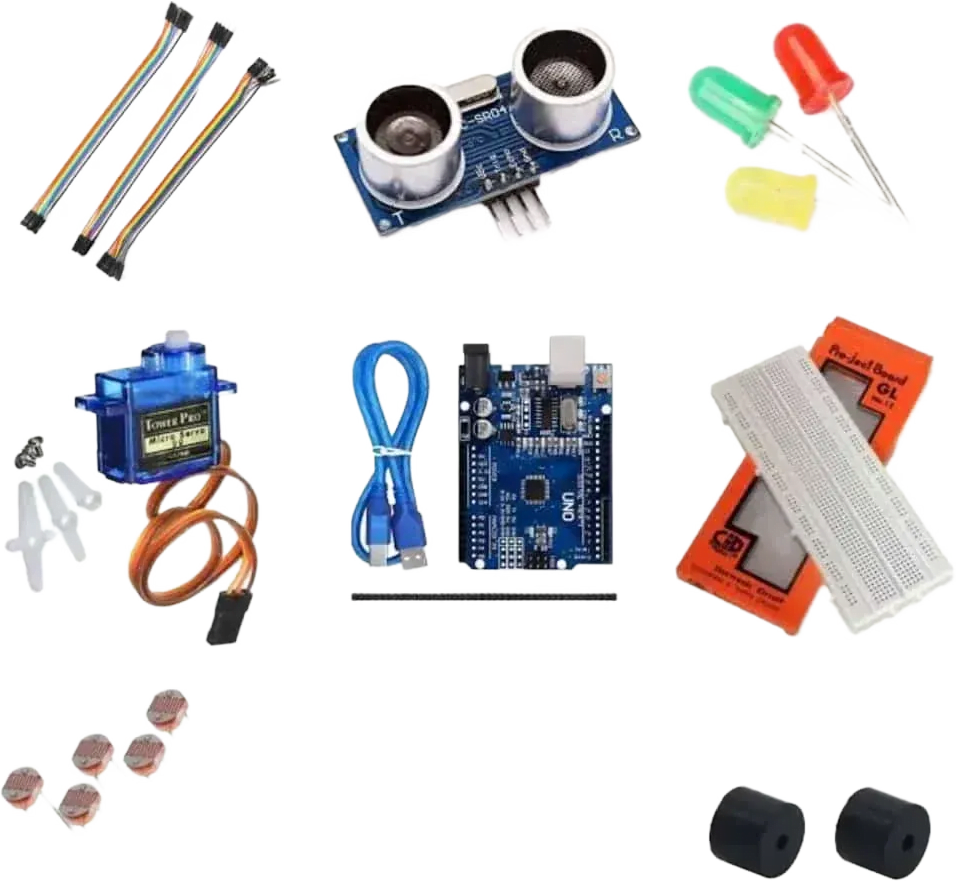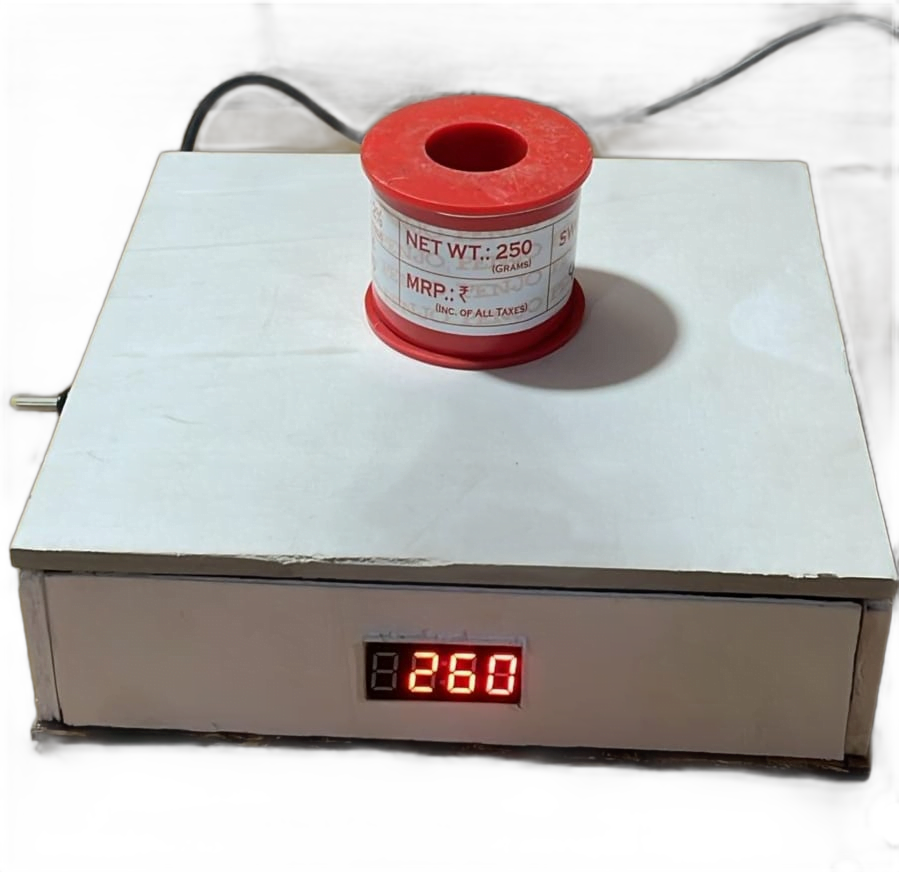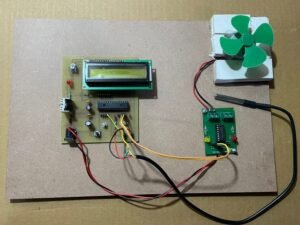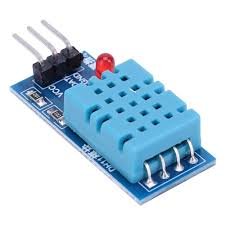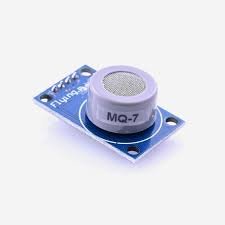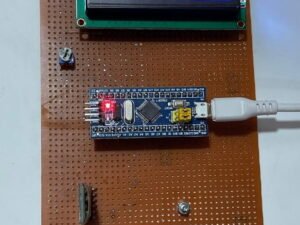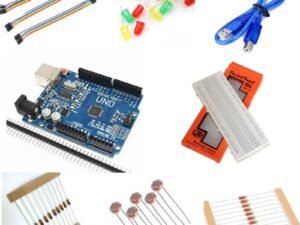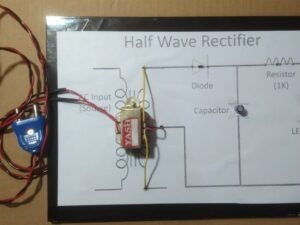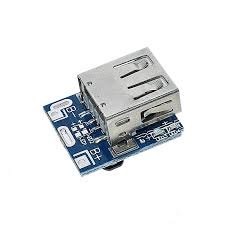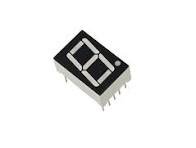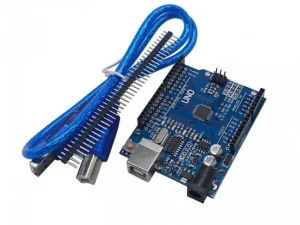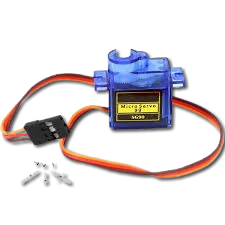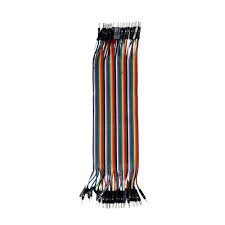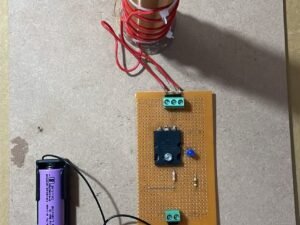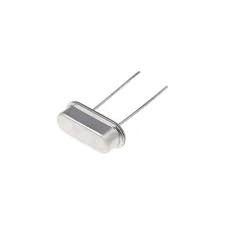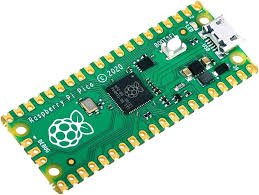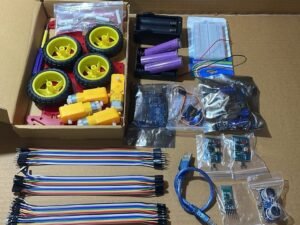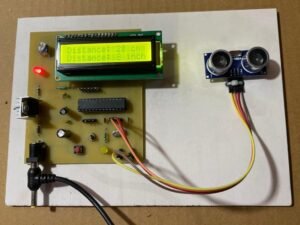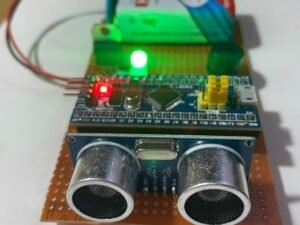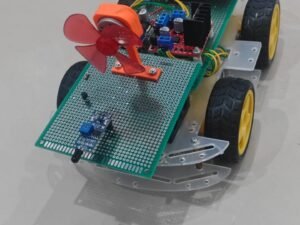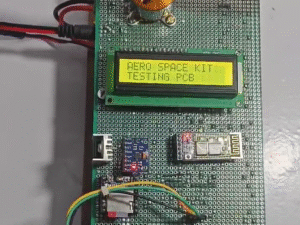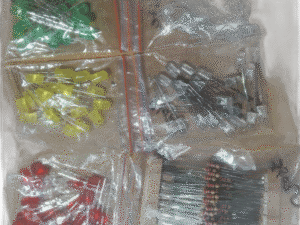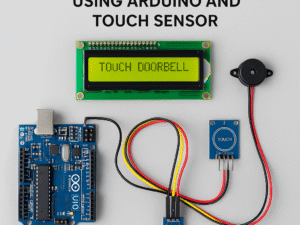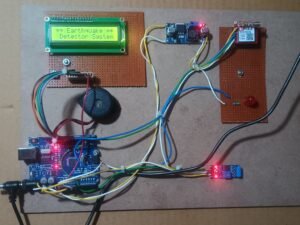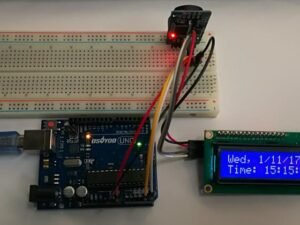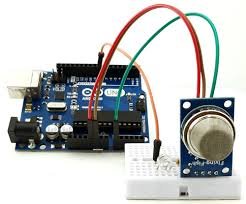The Smart Coffee/Drink Temperature Control Cup uses a Peltier module and Arduino Uno to maintain your beverage at the perfect temperature. Equipped with sensors, it continuously monitors the liquid’s heat level and adjusts accordingly using the Peltier effect. An OLED display shows the current temperature, and users can set their preferred heat via touch buttons or a mobile app using IoT (ESP8266/ESP32). Ideal for office desks or home use, it ensures your drink stays warm without overheating. Portable and USB-powered, this smart cup combines convenience and innovation for tech-savvy coffee or tea lovers.
Free Shipping Available
Call us at: +91-8506863227 , +91-7065689766
Special Offer
Save 23%
-
ATmega328 Board Projects
Temperature Controlled Fan
A temperature-controlled fan system uses an Atmega328 microcontroller, DS18B20 temperature sensor, and L293D motor driver to adjust fan speed based on ambient temperature. The DS18B20 sensor provides temperature data to the Atmega328, which processes it and controls the fan via the L293D driver, ensuring efficient cooling.
SKU: Temperature Controlled Fan -
Sensors and Modules
Humidity Sensor Module DHT11
The DHT11 Humidity and Temperature Sensor Module measures temperature (0°C to 50°C) and humidity (20% to 90% RH) with high accuracy. It features a digital output for easy interfacing with microcontrollers like Arduino, low power consumption, and a compact design, making it ideal for various environmental monitoring applications.
SKU: humidity-module-dht11 -
ATmega328 Board Projects
Bidirectional Visitor Counter Using IR Sensor and ATmega328
Explore our innovative Bidirectional Visitor Counter project using IR sensors and the ATmega328 microcontroller. This project is designed to track the number of visitors entering and exiting a room or area, making it ideal for applications in offices, shopping malls, libraries, and other public spaces.
SKU: Bidirectional Visitor Counter Using IR Sensor and ATmega328 -
Variable Resistors
500K Ohm Preset Variable Resistor (Trimmer Potentiometer) (Pack of 5)
The Preset 500K is a variable resistor with a 500k ohm resistance, designed for fine adjustments in electronic circuits. It features a compact, adjustable mechanism, allowing precise control over resistance levels. Ideal for calibration, tuning, and signal conditioning, this preset is commonly used in equipment for settings that require accurate and stable resistance adjustments.
SKU: preset-500k -
Sensors and Modules
MQ7 Sensor
The MQ7 sensor is used for detecting carbon monoxide (CO). Operating at 5V, it provides an analog output proportional to CO concentration. Applications include home safety systems, industrial safety equipment, and air quality monitors. It requires a preheat period for accurate readings and can detect CO levels from 20 ppm to 2000 ppm.
SKU: mq7-sensor -
Adaptors and SMPS Power Supplies
Adaptor 12V 3A Camera 4 Ch
A 12V 3A adapter for 4-channel camera systems provides stable power for multiple surveillance cameras. It features multiple output connectors, overvoltage and short-circuit protections, and supports a wide input voltage range (100V-240V AC), making it ideal for residential, commercial, and industrial security setups.
SKU: adaptor-12v-3a-camera-4-ch -
STM32 Projects
Wireless Notice Board using STM32
A Wireless Notice Board using an STM32 microcontroller, an LCD, and Bluetooth allows for dynamic message updates. Users can send messages wirelessly via Bluetooth, which the STM32 processes and displays on the LCD. This system is ideal for real-time updates in schools, offices, or public spaces.
SKU: Wireless Notice Board using STM32
-
STM32 Projects
Bidirectional Visitor Counter Using IR Sensor and STM32
The Bidirectional Visitor Counter using IR Sensor and STM32 efficiently tracks the flow of people in and out of a specified area. The STM32 microcontroller processes signals from the IR sensor to accurately count visitors in both directions, providing real-time data for traffic analysis and management.
SKU: bidirectional-visitor-counter-using-ir-sensor-and-stm32 -
Transistors
SCR 2P4M for AC power control (Pack of 5)
The SCR 2P4M is a type of Silicon Controlled Rectifier (SCR) with the following specifications:
- Type: SCR (Silicon Controlled Rectifier)
- Maximum Repetitive Peak Off-State Voltage (Vdrm/VRRM): 400V
- Maximum RMS On-State Current (I(T(RMS))): 2A
- Maximum Average On-State Current (I(T(AV))): 2A (with appropriate heat sinking)
- Gate Trigger Voltage (Vgt): Typically 1V to 2V
- Gate Trigger Current (Igt): Typically 10mA
- Maximum On-State Voltage (Vtm): Approximately 1.6V at I(T) = 2A
- Package Type: TO-220 or similar
The SCR 2P4M is used in applications requiring controlled rectification, such as in phase control, motor control circuits, and light dimmers. Its relatively low gate trigger voltage and moderate current handling capabilities make it suitable for various AC power control tasks.
SKU: scr-2p4m -
Arduino Uno Kit
Basic Starter Kit Arduino UNO
The Basic Starter Kit for Arduino UNO is an ideal set for beginners and hobbyists looking to dive into electronics and programming. It includes an Arduino UNO board, an 840-point breadboard for circuit prototyping, and 60 jumper wires for easy connections. The kit also provides 5 each of red, green, and yellow LEDs, allowing you to create basic light projects. Additionally, resistors of 1k, 10k, and 220 Ohms (5 each) are included to help manage current in your circuits. This versatile kit offers all the essentials needed to start learning and experimenting with Arduino projects.
SKU: basic-starter-kit-arduino-uno-+-840-pts-breadboard-+-60-jumper-wire-+-red-green-yellow-led's-+-resistor-for-arduino -
B.Tech Diploma Mini Projects
Half Wave Rectifier
Click Here to Download the Circuit Diagram of “Half Wave Rectifier”
A half-wave rectifier converts AC voltage to DC voltage using a single diode. In this project, connect an AC voltage source to the input terminals of a diode, with the anode connected to the positive terminal of the AC source and the cathode to a load resistor. The diode allows current to pass only during the positive half of the AC cycle, blocking the negative half. The output across the load resistor will be a pulsating DC signal, representing only the positive half of the input AC waveform. This setup demonstrates the basic principle of rectification and provides insight into the function of diodes in power supplies.
SKU: half-wave-rectifier-project -
Industrial Services
Software Programming Charges
Software programming charges refer to the fees charged by developers or agencies for creating, testing, and maintaining software applications. These charges vary based on several factors:
- Project Type: Custom software, mobile apps, web development, and enterprise solutions all have different costs due to varying complexity and functionality.
- Pricing Models: Common models include hourly rates, fixed pricing, milestone payments, and retainer fees. Hourly rates generally range from $20 to $200 per hour, depending on the region and developer experience.
- Complexity and Scope: More features, integrations, and scalability lead to higher costs. Larger projects with custom functionalities, such as e-commerce platforms or enterprise systems, will cost more.
SKU: Software Programming Charges -
Transistors
BT136: A Versatile 4A Triac for Power Control Applications (Pack of 5)
The BT136 is a popular silicon-controlled rectifier (SCR) capable of handling up to 4A of current and 600V. It’s used for switching applications in AC circuits, offering reliable performance in controlling power to devices such as lamps, motors, and heaters.
SKU: bt136 -
Sensors and Modules
5V Step Up Power Module
The 5V Step Up Power Module efficiently boosts low input voltages (0.9V to 5V) to a stable 5V output, ideal for powering portable electronics, DIY projects, and battery-powered devices. With up to 95% efficiency and a compact design, it provides up to 500mA output current.
SKU: 5v-step-up-power-module -
Displays
7 Segment Display Common Anode (Pack of 5)
The 7 Segment Display Common Anode is a type of LED display where all seven segments share a common positive voltage. Individual segments light up by grounding the appropriate pins. This configuration is commonly used in digital clocks, counters, and displays where you need to show numerical digits and some characters. It offers clear visibility and easy integration into electronic circuits.
SKU: 7-segment-display-common-anode
-
Batteries
Battery 9V with Clip
The Battery 9V with Clip provides convenient power for various electronic devices and DIY projects. Equipped with a snap-on connector, it ensures easy and secure attachment. Ideal for powering small electronics, prototyping circuits, and educational experiments, offering reliable performance in a compact form.
SKU: battery-9v-with-clip -
Arduino Uno Programming Board's
Arduino Uno R3 SMD with Cable
The Arduino Uno SMD is a compact, durable version of the popular Arduino Uno board. Featuring surface-mount components and the ATmega328P microcontroller, it offers 14 digital I/O pins, 6 analog inputs, and a USB interface for programming. Ideal for prototyping, education, and DIY electronics projects.
SKU: arduino-uno-r3-smd -
Servo Motors
Servo Motor SG90
The Servo Motor SG90 is a compact and lightweight servo, perfect for precise control in robotics and model projects. With a 180-degree rotation range, it’s ideal for steering, arm movements, and other motion control tasks. Its reliability and ease of use make it a popular choice for hobbyists and professionals alike.
SKU: servo-motor-sg90 -
Sensors and Modules
Ultrasonic Sensor Module
The Ultrasonic Sensor is a versatile device used for distance measurement and obstacle detection in robotics and automation. By emitting high-frequency sound waves and measuring the time it takes for them to return, it provides accurate distance readings. Ideal for applications such as collision avoidance, level sensing, and object counting, it enhances the functionality of various electronic systems.SKU: ultrasonic-sensor -
Batteries
Li-ion Battery Set (3.7V 2200mAh with Holder)
The Battery 3.7V 2200mAh Li-ion offers reliable, long-lasting power for various electronics. Ideal for projects requiring stable voltage and high energy density, it’s perfect for portable devices, DIY kits, and robotics. Its compact size and rechargeable capability make it a versatile choice for powering your innovative creations.
SKU: battery-3-7v -
Arduino Accessories
Breadboard 400 Points Medium
The Breadboard with 400 tie-points is ideal for medium-sized electronics projects. It features a balanced size, self-adhesive backing, and solderless connections, making it easy to use and perfect for designing and testing circuits. Suitable for educational and DIY projects, it is compatible with various standard components.
SKU: breadboard-400-points-medium -
Arduino Accessories
Jumper Wires Male to Male 40 Pin
High-quality 40-pin male-to-male jumper wires for Arduino, Raspberry Pi, and breadboard projects. Perfect for prototyping and circuit connections. Durable, flexible, and easy to use for all your electronics needs.
SKU: jumper-wires-male-to-male-40-pin
Products Grid
-
Batteries
Battery 9V with Clip
The Battery 9V with Clip provides convenient power for various electronic devices and DIY projects. Equipped with a snap-on connector, it ensures easy and secure attachment. Ideal for powering small electronics, prototyping circuits, and educational experiments, offering reliable performance in a compact form.
SKU: battery-9v-with-clip -
Arduino Uno Programming Board's
Arduino Uno R3 SMD with Cable
The Arduino Uno SMD is a compact, durable version of the popular Arduino Uno board. Featuring surface-mount components and the ATmega328P microcontroller, it offers 14 digital I/O pins, 6 analog inputs, and a USB interface for programming. Ideal for prototyping, education, and DIY electronics projects.
SKU: arduino-uno-r3-smd -
Servo Motors
Servo Motor SG90
The Servo Motor SG90 is a compact and lightweight servo, perfect for precise control in robotics and model projects. With a 180-degree rotation range, it’s ideal for steering, arm movements, and other motion control tasks. Its reliability and ease of use make it a popular choice for hobbyists and professionals alike.
SKU: servo-motor-sg90 -
Sensors and Modules
Ultrasonic Sensor Module
The Ultrasonic Sensor is a versatile device used for distance measurement and obstacle detection in robotics and automation. By emitting high-frequency sound waves and measuring the time it takes for them to return, it provides accurate distance readings. Ideal for applications such as collision avoidance, level sensing, and object counting, it enhances the functionality of various electronic systems.SKU: ultrasonic-sensor
-
Batteries
Li-ion Battery Set (3.7V 2200mAh with Holder)
The Battery 3.7V 2200mAh Li-ion offers reliable, long-lasting power for various electronics. Ideal for projects requiring stable voltage and high energy density, it’s perfect for portable devices, DIY kits, and robotics. Its compact size and rechargeable capability make it a versatile choice for powering your innovative creations.
SKU: battery-3-7v
-
Arduino Accessories
Breadboard 400 Points Medium
The Breadboard with 400 tie-points is ideal for medium-sized electronics projects. It features a balanced size, self-adhesive backing, and solderless connections, making it easy to use and perfect for designing and testing circuits. Suitable for educational and DIY projects, it is compatible with various standard components.
SKU: breadboard-400-points-medium -
Arduino Accessories
Jumper Wires Male to Male 40 Pin
High-quality 40-pin male-to-male jumper wires for Arduino, Raspberry Pi, and breadboard projects. Perfect for prototyping and circuit connections. Durable, flexible, and easy to use for all your electronics needs.
SKU: jumper-wires-male-to-male-40-pin
Best Sellers
Recently Added
Transistors
Voltage Regulator Combo Pack – 60 Pcs (6 Popular Types, 10 Each)
Voltage Regulator Combo Pack – 60 Pcs (6 Popular Types, 10 Each)
This Voltage Regulator Combo Pack is a must-have for electronics enthusiasts, students, and professionals working on circuit design, prototyping, and experimentation. The pack includes Six widely used Voltage Regulator, with 10 pieces of each type, totaling 60 Regulator.
SKU: n/a
Raspberry Pi and Accessories
Raspberry Pi Camera Module 2 NoIR
The Raspberry Pi Camera Module 2 NoIR is a high-quality 8MP camera designed for Raspberry Pi boards. “NoIR” stands for “No Infrared Filter,” allowing the camera to capture both visible and infrared light. This makes it ideal for night vision, low-light photography, plant monitoring, and scientific projects.
Equipped with the Sony IMX219 sensor, it can capture still images at high resolution and supports video recording at 1080p30, 720p60, and 640x480p90. The camera connects via the Raspberry Pi’s CSI interface for fast, high-quality data transmission directly to the processor.
Thanks to its sensitivity to infrared light, the NoIR camera is perfect for use with IR LEDs to record images in complete darkness. It’s lightweight, compact, and easily integrated into a wide range of projects including home automation, wildlife monitoring, and robotics.
SKU: Raspberry Pi Camera Module 2 NoIR
Arduino UNO & IOT Projects, BTech Final Year Electronics Projects, Electrical Projects (BTech MTech), Electronics Projects (BTech MTech)
IOT Based Alcohol Detector and Engine Lock system using Arduino
-11%


Arduino UNO & IOT Projects, BTech Final Year Electronics Projects, Electrical Projects (BTech MTech), Electronics Projects (BTech MTech)
IOT Based Alcohol Detector and Engine Lock system using Arduino
This project aims to design an IoT-based alcohol detection system integrated with an engine lock mechanism using an Arduino microcontroller. The system uses an MQ-3 gas sensor to detect alcohol presence in the driver’s breath. If alcohol is detected beyond a preset threshold, the system activates a relay to lock the engine, preventing the vehicle from starting.
An ESP8266 Wi-Fi module is used to send real-time alerts to a cloud server or mobile app, enabling remote monitoring. The solution enhances vehicle safety by ensuring that only sober individuals can operate the vehicle, helping reduce accidents due to drunk driving.
This smart system is cost-effective, easy to implement, and ideal for personal cars, commercial fleets, and public transport vehicles.
SKU: IOT Based Alcohol Detector and Engine Lock system using Arduino
Arduino UNO & IOT Projects, BTech Final Year Electronics Projects
IOT based Automatic Accident Avoiding Car using Arduino
-11%


Arduino UNO & IOT Projects, BTech Final Year Electronics Projects
IOT based Automatic Accident Avoiding Car using Arduino
This project presents an IoT-based Automatic Accident Avoiding Car using an Arduino microcontroller, designed to enhance road safety through obstacle detection and smart decision-making. The system uses ultrasonic sensors to continuously monitor the surroundings for nearby obstacles. When an object is detected within a critical range, the Arduino instantly stops or diverts the car to avoid a collision.
Additionally, the system integrates an ESP8266 Wi-Fi module to send real-time data or alerts to a cloud platform or mobile app, allowing for remote tracking and monitoring of the vehicle’s safety status.
This intelligent vehicle safety system can be implemented in autonomous cars, robotic vehicles, and smart transportation systems to reduce the risk of accidents and ensure safe navigation.
SKU: IOT based Automatic Accident Avoiding Car using Arduino
Robot Parts
Ultrasonic Sensor Mounting Bracket For HC-SR04
The Ultrasonic Sensor Mounting Bracket for HC-SR04 is a specially designed holder used to securely fix the HC-SR04 ultrasonic distance sensor in robotic and embedded systems projects. It provides a stable platform for accurate sensor positioning, ensuring better distance measurement and reducing the chance of vibration or misalignment during movement or operation.
The bracket is typically made from acrylic, plastic, or metal, and features pre-cut slots or holes that align perfectly with the sensor’s pins and body. It can easily be mounted onto robots, cars, or fixed stations using screws, glue, or bolts.
SKU: Ultrasonic Sensor Mounting Bracket For HC-SR04
Arduino UNO & IOT Projects, BTech Final Year Electronics Projects, Electrical Projects (BTech MTech)
Industrial Safety Helmet with Hazard Alerts & Location Tracking
-17%

Arduino UNO & IOT Projects, BTech Final Year Electronics Projects, Electrical Projects (BTech MTech)
Industrial Safety Helmet with Hazard Alerts & Location Tracking
The Industrial Safety Helmet with Hazard Alerts is designed to offer the highest level of protection for workers in hazardous environments. With its cutting-edge technology, this helmet ensures that safety is never compromised. Equipped with integrated hazard alert systems, you will remain aware of potential dangers, making it an essential piece of safety gear for construction sites, factories, and other industrial settings.
Helmet senses toxic gas, temperature, and fall.
Sends worker’s real-time data and GPS location to the control room.
SKU: Industrial Safety Helmet with Hazard Alerts & Location Tracking
Arduino UNO & IOT Projects, BTech Final Year Electronics Projects, Electronics Projects (BTech MTech)
Brain-Controlled Home Automation (EEG Headset Interface)
-11%
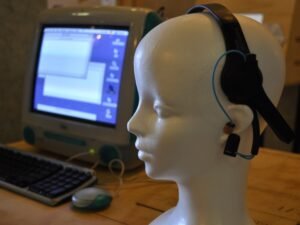

Arduino UNO & IOT Projects, BTech Final Year Electronics Projects, Electronics Projects (BTech MTech)
Brain-Controlled Home Automation (EEG Headset Interface)
Imagine controlling your home environment with just your thoughts. The Brain-Controlled Home Automation System utilizes cutting-edge EEG headset technology to offer a seamless interface between your brain and various household devices. This innovative solution empowers users to manage their smart homes without the need for physical interaction or voice commands, transforming the way you live.
SKU: Brain-Controlled Home Automation (EEG Headset Interface)
Arduino UNO & IOT Projects, Electrical Projects (BTech MTech)
Smart Energy Meter with IoT Monitoring using Arduino
-13%


Arduino UNO & IOT Projects, Electrical Projects (BTech MTech)
Smart Energy Meter with IoT Monitoring using Arduino
Introducing the Smart Energy Meter with IoT Monitoring using Arduino, a groundbreaking solution designed to bring efficiency and control to your energy consumption. This advanced meter allows you to monitor and analyze your energy usage in real-time, providing the insights necessary to optimize your electricity consumption and reduce costs.
SKU: Smart Energy Meter with IoT Monitoring using Arduino
Arduino UNO & IOT Projects
Automated Pet Feeder using Arduino with Remote Access
The Automated Pet Feeder using Arduino with Remote Access is designed for pet owners who want to simplify their feeding routines. Imagine being able to feed your pets on a fixed schedule while you’re at work or on vacation. With this innovative device, you can ensure your pets receive their meals at the right time, every time. This not only helps in maintaining their health but also gives you peace of mind.
SKU: Automated Pet Feeder using Arduino with Remote Access
Arduino Uno Mini Projects
Touch-Based Doorbell using Arduino and Touch Sensor
Touch-Based Doorbell using Arduino and Touch Sensor
The Touch-Based Doorbell is a smart and hygienic alternative to traditional mechanical doorbells. Built using an Arduino Uno and a TTP223 capacitive touch sensor, this project allows users to ring the doorbell simply by touching a sensor pad—no pressing required. It’s a great solution for smart homes and public spaces where minimizing physical contact is important.
When a user touches the sensor, it sends a signal to the Arduino, which then activates a buzzer to produce a chime sound. The system is simple, cost-effective, and easy to build. It can also be expanded by integrating features like wireless alerts or camera systems.
SKU: Touch-Based Doorbell using Arduino and Touch Sensor
Arduino Uno Mini Projects
Earthquake Detector using Arduino and Vibration Sensor
Earthquake Detector using Arduino and Vibration Sensor
The Earthquake Detector is a basic yet effective project built using an Arduino Uno and a vibration sensor (SW-420) to detect tremors or seismic activity. The sensor continuously monitors ground vibrations. When sudden or strong vibrations are detected, it sends a signal to the Arduino, which then triggers an alarm using a buzzer or LED to alert nearby individuals.
This system is simple to build and helps demonstrate how vibration sensing can be used in early warning systems. It can be further enhanced by integrating a 16×2 LCD to display real-time status or even a GSM module to send alerts remotely.
SKU: Earthquake Detector using Arduino and Vibration Sensor
Arduino Uno Mini Projects
Real-Time Clock Display using Arduino and RTC Module
Real-Time Clock Display using Arduino and RTC Module
The Real-Time Clock (RTC) Display is a practical Arduino project that shows the current time and date using an RTC module like the DS3231 or DS1307, and a 16×2 LCD with I2C interface. The RTC module keeps track of time even when the Arduino is powered off, thanks to its internal battery.
The Arduino reads the time and date from the RTC module via I2C communication and continuously updates the LCD display. It shows real-time hours, minutes, seconds, and date, making it ideal for clocks, loggers, or time-based automation projects.
SKU: Real-Time Clock Display using Arduino and RTC Module
Arduino Uno Mini Projects
Light Following Robot using Arduino and LDR Sensor
Light Following Robot using Arduino and LDR Sensor
The Light Following Robot is a fun and educational robotics project that uses Arduino Uno and LDR (Light Dependent Resistor) sensors to detect and follow a light source. It mimics the behavior of light-seeking organisms and is great for learning sensor-based automation and basic robotics.
The robot is built on a chassis with two DC motors controlled by an L298N motor driver. Two LDRs are placed at the front to sense light intensity. When one LDR detects more light than the other, the Arduino signals the motors to turn toward the brighter side. If both LDRs detect equal light, the robot moves forward.
SKU: Light Following Robot using Arduino and LDR Sensor
Arduino Uno Mini Projects
Gas Leak Detector using MQ-2 Sensor and Arduino
Gas Leak Detector using MQ-2 Sensor and Arduino
The Gas Leak Detector is a safety project that uses an MQ-2 gas sensor and Arduino Uno to detect the presence of flammable gases like LPG, methane, or propane. It’s a useful system for homes, kitchens, and industrial spaces where gas leaks can pose serious hazards.
The MQ-2 sensor detects gas concentration and sends an analog signal to the Arduino. When the gas level exceeds a predefined threshold, the Arduino triggers a buzzer and/or LED as an alert. Optionally, a 16×2 LCD (with I2C) can display real-time gas levels.
SKU: Gas Leak Detector using MQ-2 Sensor and Arduino
Arduino Uno Mini Projects
Traffic Light Controller using Arduino and Traffic Light Module
Traffic Light Controller using Arduino and Traffic Light Module
The Traffic Light Controller project uses an Arduino Uno and a traffic light module (or individual red, yellow, and green LEDs) to simulate a real-world traffic signal system. It’s an ideal beginner project for understanding automation, timing, and microcontroller-based control systems.
The Arduino is programmed to control the lights in a specific sequence—green (go), yellow (wait), and red (stop)—each with a set time duration. This cycle runs continuously, mimicking an intersection traffic light system. Optional enhancements like pedestrian buttons, vehicle sensors, or countdown timers can be added to make the project more interactive and realistic.
SKU: Traffic Light Controller using Arduino and Traffic Light Module
Arduino Uno Mini Projects
RFID-Based Attendance System using Arduino
RFID-Based Attendance System using Arduino
The RFID-Based Attendance System is a smart and contactless method to record attendance using RFID technology. It uses an Arduino Uno, RC522 RFID reader, and RFID tags/cards assigned to individuals.
When a person taps their RFID card near the reader, the system reads the card’s UID and checks it against pre-stored data in the Arduino. If the UID is valid, a 16×2 LCD (with I2C) displays a message like “Attendance Marked”, and a buzzer or LED can signal a successful scan. Invalid cards show an “Access Denied” message.
SKU: RFID-Based Attendance System using Arduino



